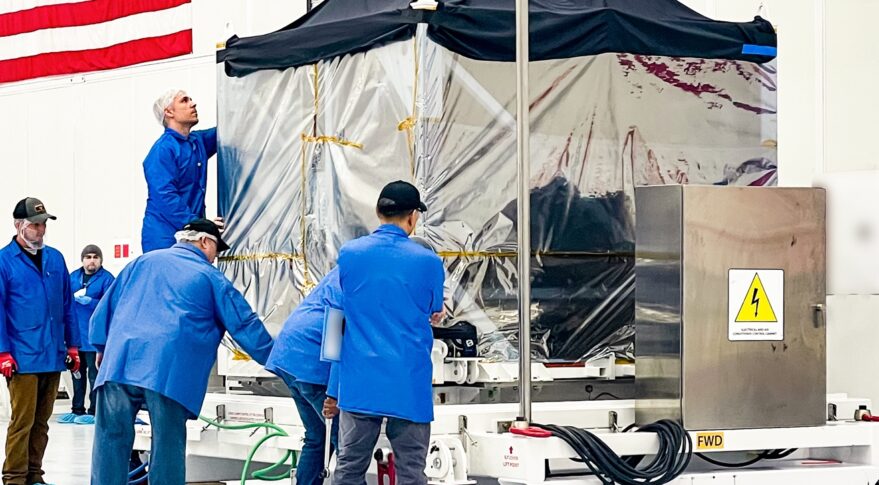TAMPA, Fla. — Startups developing constellations for providing connectivity directly to standard cellphones say they stand to benefit from SpaceX entering their market.
The business opportunity SpaceX’s Elon Musk sees validates an emerging market that would be big enough for multiple players, according to U.S.-based startups AST SpaceMobile and Lynk Global.
While these ventures have yet to provide commercial services, they also point to a head-start in securing the mobile operator partnerships that would be needed for a global network.
SpaceX unveiled its direct-to-cell plans Aug. 25 in a partnership with T-Mobile that, subject to regulatory approvals, would connect phones beyond the reach of cell towers in the United States as soon as next year.
Beta services would initially be limited to basic messaging, with voice and data capabilities coming at an unspecified future date.
It is the latest space-related market that Musk is seeking to disrupt.
SpaceX has already transformed the launch industry with reusable Falcon 9 rockets, and its rapidly expanding Starlink broadband network is currently the world’s largest constellation with more than 2,800 satellites in orbit.
Last year, SpaceX also bought Swarm Technologies to expand into the market for connecting low-power Internet of Things devices, although plans to disrupt this sector remain under wraps.
“We knew this day would come,” Lynk Global CEO Charles Miller said in an interview.
“I didn’t know when it would come or how, like in partnership with T-Mobile, but I knew Elon couldn’t resist jumping in. He has to be part of any really big business.”
It is a global market forecast to reach “tens of billions of dollars,” AST SpaceMobile chief strategy officer Scott Wisniewski said.
Both startups see Musk’s arrival as helping to validate this projection, while helping to build traction among customers and investors.
Musk’s game plan
SpaceX and T-Mobile seek international partnerships with mobile providers to forge reciprocal roaming alliances.
T-Mobile is providing a slice of its 1.9 GHz spectrum in the United States under its partnership with SpaceX.
Notably, SpaceX requested permission last month to use the nearby 2 GHz spectrum band for mobile satellite services.
These frequencies would likely transmit from the same antenna that SpaceX’s upgraded Starlink satellites would use to connect directly to cell phones in the 1.9 GHz band.
However, many companies do not operate terrestrial mobile wireless services in the 1.9 GHz band, Miller said, and none currently have rights to the 2 GHz band.
While it is unknown whether Musk could consider partnerships in other frequencies, mobile operators unable to join SpaceX’s planned international roaming alliance could find themselves clambering for alternatives.
Musk’s request for 2 GHz spectrum suggests he could be planning to avoid mobile operator partnerships altogether to sell directly to consumers, Miller added.
SpaceX sells its Starlink broadband service directly to customers. Musk’s Tesla automaker has also grown without partnering with dealerships.
Miller said Lynk has 14 commercial contracts covering 35 countries for its planned services, and “over 30 testing agreements” with other mobile operators.
Lynk Tower 1, the Virginia-based startup’s first commercial satellite, launched to orbit in April on a SpaceX Transporter 4 rideshare mission.
Lynk had planned to deploy its second satellite on Transporter 4 via Spaceflight’s Sherpa tug, but had to find an alternative after the orbital transfer vehicle could not fly on the mission.
This second satellite is now slated to fly with two other Lynk spacecraft on a SpaceX Transporter 6 mission slated for December, Miller said.
Four satellites in orbit would be enough to launch initial text messaging, emergency alerts and IoT services.
By the end of 2023, Lynk expects to have deployed more than 50 satellites to increase satellite revisit times to every 15-30 minutes.
Texas-based AST SpaceMobile has partnerships with more than 25 mobile operators, including an exclusive agreement with Vodafone in 24 different markets.
The company expects to deploy the first five operational satellites for its direct-to-cell constellation late next year.
While these will be half the size of satellites AST SpaceMobile plans to deploy later, they are larger than Lynk’s pizza box-shaped spacecraft at about 1,500 kilograms each.
AST SpaceMobile’s satellites will also have antennas of around 64 square meters in size, more than double the size of antennas that Musk outlined for its service.
“We are designing a cellular broadband solution,” Wisniewski said, “and in terms of capability and throughput per cell, we expect to be an order of magnitude larger.”
While Lynk says it is reducing technical and financial risks with smaller satellites, it and AST SpaceMobile highlight cost and operational advantages of constellations dedicated to direct-to-cell services.
SpaceX seeks to add this capability to second-generation Starlink satellites that would also beam high-speed broadband to dishes at mainly fixed locations.
Meanwhile, another entrant for the direct-to-cell satellite market could emerge this week.
Speculation that Apple is preparing to announce a partnership with Globalstar to offer some form of iPhone satellite connectivity resurfaced after SpaceX’s T-Mobile tie-up.
An announcement could be made during an event Wednesday to unveil the iPhone 14, although similar rumors around previous iPhone events have failed to materialize.

